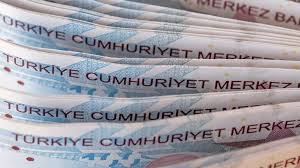Bankers suggest that the rapid decline in excess lira liquidity within Turkey’s banking system, attributed to recent measures by the central bank, may prompt further traditional open market operations to provide additional funding.
According to central bank auction and reserve data, the central bank has withdrawn over 1 trillion lira of liquidity from the market, with the majority occurring at the end of the previous month. This move aims to strengthen the monetary transmission mechanism.
Excess liquidity in the banking system has notably decreased from over 200 billion lira to 14 billion lira as of Wednesday.
To address the surplus liquidity issue, the central bank has implemented measures such as required reserves to sterilize excess liquidity and conducted depo auctions.
Given that excessive liquidity can dilute the effectiveness of monetary policy, these actions align with the central bank’s objective to combat inflation and manage demand through a vigorous rate-hike strategy initiated in June of the preceding year.
Some bankers, speaking anonymously, anticipate the central bank to resume funding through open market operations once excess liquidity diminishes.
They suggest that as money market rates rise and the impact of excess liquidity fades, deposit rates may also increase.
The accumulation of excess liquidity within the banking system primarily stems from disparities in payments to accounts within an FX-protected deposit scheme and FX transactions against Turkish lira.
While swaps with local banks serve as the primary funding channel, the current 5 billion lira one-week repo stock represents a minimal portion of central bank funding.
In its annual monetary policy statement, the central bank expressed intentions to continue swap transactions to aid banks in liquidity management, albeit with a gradual reduction.
As excess liquidity dwindles, overnight market interest rates have exceeded the central bank’s 45% policy rate, with the overnight repo rate at BIST reaching 46.02% as of Wednesday.
